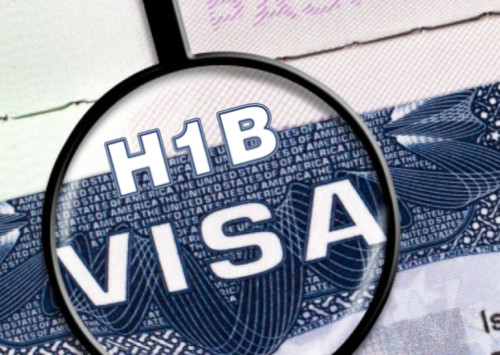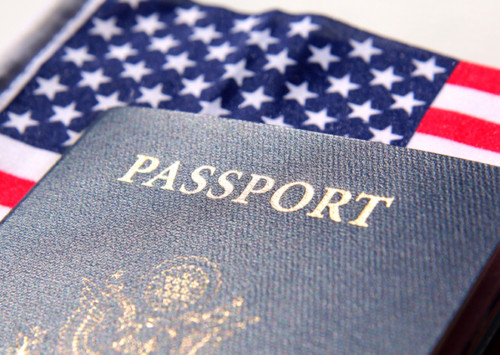H1B Visa Ban: Time for Indian IT firms to move beyond low hanging fruits
For the last five quarters, the results of the Indian IT firms, key drivers of the country’s stock markets, have depended upon mood swings of the highly temperamental and unpredictable President of the United States Donald Trump.
Ever since he began targeting the relatively small but high profile H1B visa segment, governing the immigration of highly skilled workers into the United States, Trump has been blowing hot and cold over exactly how far he is willing to go in his ‘protection of American jobs and the US economy’.
His statements and his moves to curb use of H1B visas by US and foreign companies has perhaps upset US firms much more than companies from other nations such as India. When a few weeks ago, the Trump administration banned new H1B visas and some other non-immigrant worker visas until December 31, 2020, saying ‘the US government wants to protect the interest of domestic workers who have been adversely impacted due to the contraction of the US economy post the pandemic’, it was roundly criticised by American businesses.
Moreover, a clutch of American companies, led by the BigTech giants such as Apple, Alphabet, Microsoft, Facebook and Amazon promptly challenged his order in a US court and received partial relief earlier this week when the court stayed Trump’s order.
Unrepenting, on the day he returned to the Oval Office after a brief spell of hospitalisation due to coronavirus infection, citing 500,000 American jobs lost ‘due to H1B visas’, Trump went ahead and issued another order raising significantly the wages to be paid for foreign workers in the United States under H1B visas.
Use of H1B Visa
For over three decades now, a number of companies across various sectors such as banking, finance, health, manufacturing, retail and of course technology have been using these visas to get low cost employees from developing countries such as India and China. Most of these employees are in fact sub-contracted from foreign companies and dozens of Indian IT firms including giants such as Tata Consultancy Services, Infosys or Cognizant. For most of the Indian ITES firms this sub-contracting of fairly basic work accounts for a significant chunk of their revenues and profits, often going as high as 50 pc. Indeed, for several years now Indian workers have accounted for a large majority of H1B visas issued each year. For instance, in 2018, Indians accounted for 73 pc of about 420,000 applications for H1B visas received by the US immigration authorities.
The visa allows the temporary workers to stay and work in the country for a period of six years and till recently these visas were fairly routinely renewed. However, since Trump’s advent in the White House, there have been increasing number of denials for renewal as well as issuance of fresh visas.
According to Nasscom, the Indian IT industry lobby group, Trump’s orders may not have significant impact in the short run on the Indian IT services firms as new visas contribute to 5 pc or less for the total number of employees that they have in the United States.
Local hiring rises
Even though Trump has been especially hard on H1B issue, there have been occasions in the past when political pressures have made it difficult for immigration authorities to approve large number of visas in one go. They have been tightening the norms governing them by either raising salaries to be paid to employees on H1B visas or refusing their spouses right to work or even changing the qualifications needed for getting the visa. As a result, the rates of rejection of these visas have been rising sharply, with nearly 42 pc of all fresh visa applications rejected by the US government in 2018.
On their part, the Indian ITES firms have been trying to cushion themselves against such political volatility by increasing their footprint in the US. They have adopted two key prongs to lower the influence of H1B visas on their operations in the US. One is by hiring more locally. Most of the large companies now have a sizeable number of local US workers in their headcount. Take Infosys for example. The second-largest Indian firm has already hired 13,000 persons in the United States and has committed to taking the US headcount to 25,000 by 2022, close to 10 pc of its total manpower.
As a result of local hires, the top 4 Indian ITES players have sharply lowered their dependency on H1B visas. Besides hiring on their own payrolls, they have also started to use human resource providing companies on contractual basis.
Another strategy for the Indian firms has been to go on an aggressive acquisition strategy picking up companies that prove a good fit to their plans in the world’s largest technology market.
According to experts, Indian companies are expected to have negligible short-term impact on support services, system integrators could see some impact; while the technology vendors who will be the most impacted may increase high-end talent use outside the US.
However, both local hires and acquisitions have increased the operating costs for the Indian firms and hurt their net margins, which have fallen from the heady 25-30 pc to more sober levels as their costs keep rising. Wage costs for the Tier I players flared by 17 pc last year as against 6 pc earlier.
Product development & higher value segments
But Indian businesses have even begun to address the elephant in the room, moving higher up in the value chain and competing head-on with their global peers in cutting edge technology areas like machine learning, artificial intelligence, cloud and of course product development. Despite its four decades of existence, the Indian IT industry has failed to develop products that can be sold globally, pretty much like the BigTech firms do. This is primarily because the R&D spends of Indian firms are a fraction of what their US, European or Asian rivals do. For instance, for nearly a decade, TCS has maintained its R&D spend at about 1-1.5 pc of the gross revenues. This pales in significance to an average of 12-15 pc that each of the global BigTech companies have been doing consistently for nearly two decades.
With little appetite to spend money on R&D, Indian IT firms are increasingly finding themselves confined to client servicing rather than developing and selling high quality own IP products. Certainly, it would cut their margins severely, but if they continue to focus on outsourcing and low-value businesses, they may find themselves replaced by AI and ML.













